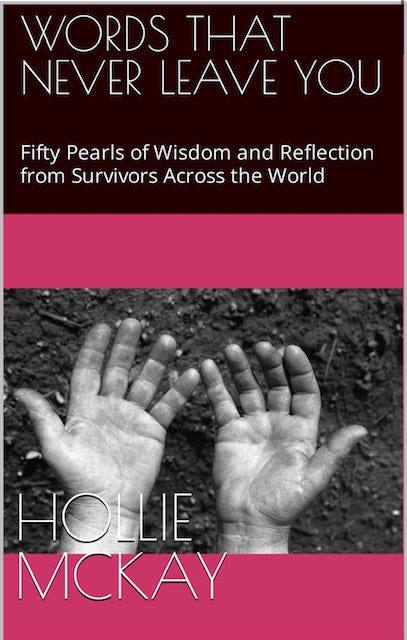I have spent so much of my adult life in far-flung parts of the world it is easy to forget that we have so many searing crises right at home, too. And one I was shocked to learn about was the rising nature of children born to addiction and the tragic lapses in the system with fatal outcomes.
Most of us have heard at least something about the opioid crisis gripping America. The number of drug overdoses and poisonings rose almost thirty percent between 2019 and 2020 and continues to grow – killing more than 120 people per day. However, this crisis also drastically affects babies before they have even entered the world.
This is commonly referred to as “neonatal abstinence syndrome” (NAS) when babies are exposed to drugs – typically opioids both illegal and prescribed – in the womb and suffer dangerous and unfathomable agony withdrawals after birth. When the umbilical cord is severed, chemical imbalances ignite abnormal and extreme behavior. Many struggles to eat, shake uncontrollably, break out in painful rashes, endure intense sneezing fits, spasms and bowel discomfort, are easily frightened and high-pitched cry incessantly and inconsolably. Some are born preterm at alarmingly low body weights and suffer seizures, congenital disabilities and jaundice.
Since so many drug-dependent newborns go unreported, no one knows precisely how many children are killed or injured while in the care of drug-addicted parents, but the data we do have is soul-destroying. According to a Reuters analysis of federal data and information published by the Centers for Disease Control and Prevention, at least seven out of every one thousand babies born each year are diagnosed with Neonatal Abstinence Syndrome – more than thirty-two thousand annually – a figure that has tripled in fifteen years. Every 19 minutes, a baby is born dependent on opioids. And yet, these numbers are thought to be on the very low end.
The latest CDC report shows chilling leaps in almost every U.S. state; the biggest rises occurred in Maine, Vermont and West Virginia.
Yet it is after the mother returns home that life hangs in limbo.
Last year, a relatively new friend divulged his own traumatic experience, which I did not know then could be attributed to NAS. His former wife gave birth to their son while addicted to a string of painkillers and sleep medications. She fell hard asleep during a midnight feed due to the opioid medicines – suffocating her three-week-old newborn.

Sadly, this tragedy is not an anomaly in America. I scoured seemingly endless, heartbreaking case files of babies dying from a similar fate. Others are killed after ingesting lethal doses of heroin, methadone, oxycodone and other opioids. As a result of methamphetamine and opioid use, a mother in Oklahoma put a baby in the washing machine with dirty laundry, and she died.
What failed all these tiny humans was a broken system that enabled them to be discharged with their evidently drug-dependent mothers, followed by a lack of medical and welfare checks. In many cases, the mother was sent home with opioid prescriptions. Thus, the cases were not reported to officials for further due diligence. In many cases I examined, hospitals did not adequately analyze the mother and child before release, even when the red flags were hard to miss. I can’t help but wonder if this is another cryptic example of our flawed and embarrassing healthcare system, where the importance of freeing up a bed comes at the expense of an infant’s life. It must also be pointed out that even for those in recovery, the risk of relapse is highest when a mom takes home that new baby – the sleeplessness, stress and anxiety that afflicts almost all new mothers is bound to be a cause for concern.
Although Congress passed the Keeping Children and Families Safe Act two decades ago, drug-dependent babies are only growing. Federal law mandates that states protect these newborns and have a duty to notify protection authorities in cases where a mother is believed to be addicted to and/or prescribed or illicit substances so that social workers can ensure a newborn’s well-being and safety after discharge. Yet it seems most states dismiss federal protocols, leaving thousands of newborns to fall through society’s cracks. Moreover, many states do not require hospitals to report cases of NAS if the mother takes prescribed medication, including narcotics, painkillers or methadone, to reduce the stigma connected to those suffering from addiction and substance abuse. These days, most states only require reports to protection services if the mother is dependent upon contraband medications.
Despite the far-reaching lack of compliance, a Reuters investigation found that “no state has ever lost federal funding for failing to meet the law’s provisions.” And even when hospitals report to authorities, appropriate agencies do not always follow through with reviews.
An independent oversight body, the Oklahoma Commission on Children and Youth, investigated why the state’s social service system failed. The commission critiqued ten reported NAS cases, of which only five warranted subsequent scrutiny. A hotline worker hurriedly threw out two, and another three were recommended for parenting classes. Eight of the ten babies died of neglect or abuse before they were six months old.
Twenty-three states and the District of Columbia consider drug use during pregnancy child abuse, sometimes regardless of whether the substance was prescribed or the mother had reasonable access to addiction treatment. However, critics contend that punishing the mother is no cure. Making matters worse is the flood of illicit fentanyl introduced by cartels south of the border, who acquire the pre-cursors from pharmaceutical factories in China.
Drug addiction is an undeniably massive and heartbreaking problem in the United States – impacting the tiniest of humans, those who deserve much better. We cannot just point our fingers across borders to solve the problem; inward work must also be done.
The prevention of opioid overdose deaths requires coordination and teamwork. This complex and rapidly expanding epidemic requires awareness, resources, and expertise from medical personnel, emergency departments, first responders, public safety officials, mental health and substance abuse treatment providers, community-based organizations, public health, and community members.
We have to get our heads out of the sand – and all of us can play a more significant role. This isn’t someone else’s problem; this is ours.
PLEASE CONSIDER A PAID SUBSCRIPTION TO THIS SUBSTACK TO HELP KEEP INDEPENDENT, AGENDA-FREE WRITING AND JOURNALISM ALIVE. THANK YOU SO MUCH FOR YOUR SUPPORT.
For speaking queries please contact meta@metaspeakers.org
Follow me on Instagram and Twitter for more updates
HOLLIE’S BOOKS (please leave a review)
** Short read of meaningful lessons gleaned from the ordinary forced to become extraordinary
Order your copy of “Afghanistan: The End of the US Footprint and the Rise of the Taliban Rule” due out this fall.
For those interested in learning more about the aftermath of war, please pick up a copy of my book “Only Cry for the Living: Memos from Inside the ISIS Battlefield.”
If you want to support small businesses:





